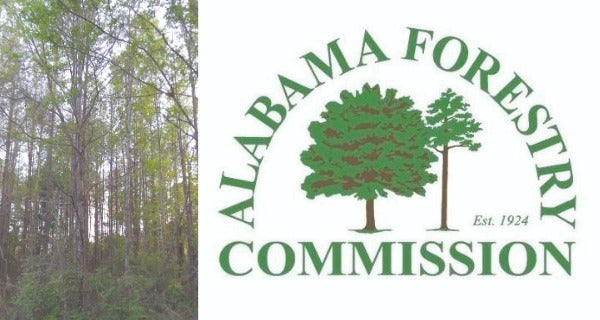Alabama’s forest resources play a vital role in shaping the state’s economic landscape and long-term sustainability. Covering around 70% of its total land—over 23 million acres—the state stands as a national leader in timber supply and production of forest-based goods. This natural abundance not only supports ecological health but also fuels a significant portion of Alabama’s economy, contributing roughly $28 billion each year and sustaining tens of thousands of jobs across rural and urban areas alike. n nThe industry spans multiple sectors, from harvesting and raw material processing to advanced manufacturing and innovation in bioenergy. In many rural counties, sawmills, pulp facilities, and logging operations are among the largest employers and sources of tax revenue, making forestry a cornerstone of local economic stability. With increasing global demand for renewable construction materials, sustainable paper, and biomass energy, Alabama is well-positioned to expand its footprint in both domestic and international markets. Unlike industries prone to relocation, forestry remains anchored due to its dependence on locally owned land and regenerative nature. n nCareer opportunities within this sector are diverse and accessible at various education levels. Roles range from conservation scientists managing ecosystems and wildlife habitats to skilled operators using advanced machinery in timber extraction. Manufacturing plants require electricians, engineers, and production supervisors, while emerging fields like carbon accounting, sustainable supply chains, and renewable energy create new pathways for professionals in science and technology. Innovations such as drone surveillance, satellite imaging, and geospatial analytics have also opened doors for IT and data specialists in forest management. n nTo maintain leadership in this field, Alabama must address workforce challenges, including an aging labor pool and limited awareness among younger generations. Strategic initiatives include integrating forestry education into high schools and community colleges, expanding apprenticeships, and strengthening collaboration between training institutions and industry leaders. Targeted outreach to veterans, displaced workers, and rural populations can help meet labor demands. Additionally, coordinated efforts among economic development agencies, employers, and policymakers are essential to align training programs with market needs and ensure sustained investment. n nAs a sector rooted in tradition yet evolving with technology, forestry offers a balanced model for economic resilience. By prioritizing workforce development, education reform, and innovation, Alabama can continue leveraging its natural assets to drive inclusive growth and global competitiveness. n— news from | Luverne Journalnn
— News Original —nForestry and Alabama’s Economic Development n nPublished 6:00 pm Tuesday, September 16, 2025 n nHow to Sustain Growth Through Workforce Pathways n nBy Nicole Jones Wadsworth n nForestry has long been an integral part of Alabama’s economy and cultural identity. With more than 23 million acres of timberland, which covers approximately 70% of the state’s total land area, Alabama ranks among the nation’s leaders in both timber supply and forest product manufacturing. Our state’s abundant forest resources provide environmental benefits and serve as a foundation for economic development and workforce opportunity. n nEconomic Impact of forestry n nThe forestry sector contributes an estimated $28 billion annually to Alabama’s economy and supports tens of thousands of jobs across the value chain. From timber harvesting and primary processing to advanced manufacturing and bio-based innovation, forestry represents a critical economic engine — particularly in rural counties, where mills and logging operations are often among the largest employers and tax revenue generators. n nGlobal market trends further underscore Alabama’s competitive advantage. The growing demand for renewable building materials, sustainable paper products, and biomass energy positions our state to expand its presence in both domestic and international markets. Unlike cyclical industries that may relocate, forestry’s renewability and reliance on local land ownership ensure that its benefits remain deeply rooted in Alabama’s communities. n nCareer Pathways, Workforce Development n nThe breadth of forestry-related careers provides opportunities across a range of skills and education levels. Key pathways include: n nForest Management and Conservation – Professional foresters and conservation scientists manage timber resources while balancing ecological considerations such as wildlife habitat, soil health and water quality. n nLogging and Operations – Skilled equipment operators and technicians play a central role in modern timber harvesting, utilizing advanced machinery and safety practices. n nWood Products Manufacturing – Alabama’s network of sawmills, pulp and paper facilities, and engineered wood plants requires a workforce of millwrights, electricians, engineers and production managers. n nSustainability and Environmental Science – Careers are emerging in areas such as carbon accounting, biomass energy, and sustainable supply chain management, which align with global shifts toward renewable resources. n nResearch and Technology – The integration of drones, satellite imaging, and geospatial data analytics has created opportunities for professionals in applied sciences and information technology. n nThis range of career options demonstrates that forestry is a multidimensional field that encompasses traditional skills, technical trades and knowledge-driven professions. n nAs Alabama seeks to maintain and expand its leadership in forestry, workforce recruitment and training are paramount. Challenges include replacing an aging workforce, raising awareness among younger populations and aligning educational programs with industry needs. n nStrategic approaches include: n nEducational Integration – Expanding forestry curricula in high schools, community colleges and universities to increase awareness and prepare students for career entry. n nApprenticeships and Work-Based Learning – Strengthening partnerships between industry and training institutions to provide pathways from education to employment. n nTargeted Recruitment – Engaging underrepresented populations, including veterans, rural residents and displaced workers, to meet workforce demand. n nIndustry Collaboration – Enhancing cooperation among economic developers, employers, and state agencies to coordinate messaging, incentives, and training investments. n nForestry is both a legacy and a future-oriented industry for Alabama. Its economic contributions, environmental stewardship and broad career opportunities position it as a cornerstone of sustainable growth. By investing in workforce recruitment, education, and technological innovation, Alabama can ensure that forestry continues to generate prosperity while strengthening our state’s competitiveness in a global economy.
